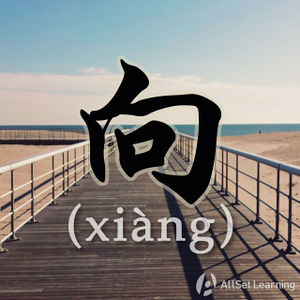Difference between revisions of "Expressing "towards" with "xiang""
Wu.mengmeng (talk | contribs) |
|||
| Line 41: | Line 41: | ||
{{Similar|Using "dui"}} | {{Similar|Using "dui"}} | ||
{{Basic Grammar|向|B1|向 + Noun⋯⋯|我 <em>向</em> 她 笑 了。不要 <em>向</em> 他 道歉。|grammar point|ASGQXARS}} | {{Basic Grammar|向|B1|向 + Noun⋯⋯|我 <em>向</em> 她 笑 了。不要 <em>向</em> 他 道歉。|grammar point|ASGQXARS}} | ||
| + | {{POS|Verbs}} | ||
Revision as of 06:51, 15 June 2012
-
Level
-
Similar to
-
Used for
-
Keywords
Structure
When used as a preposition, "向" (xiàng) indicates an action that is performed towards a reference point. An example of this in English is, "She looked inside the window." Note that there is no movement in the action.
向 + Noun + Verb
Examples
- 她的 朋友 一直 向 我 看。
- 我们 需要 向 他 道歉。
- 他 的 女朋友 向 他 笑 了。
- 我 要 向 你 学习!
Note that whereas in English we would say "learn from someone", in Chinese this would be expressed as "learn toward someone", as in the last example sentence.



